
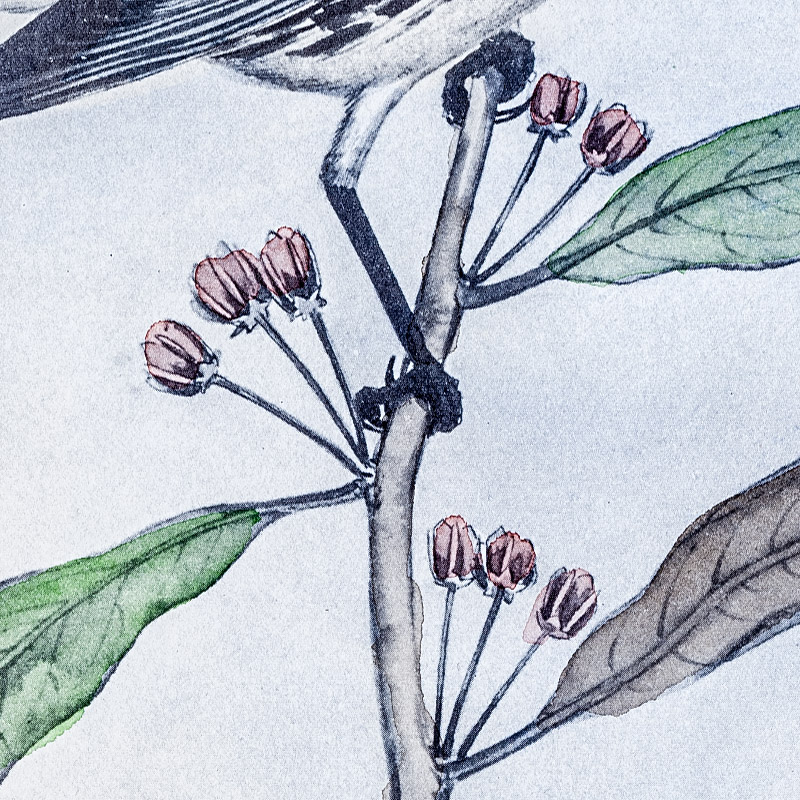
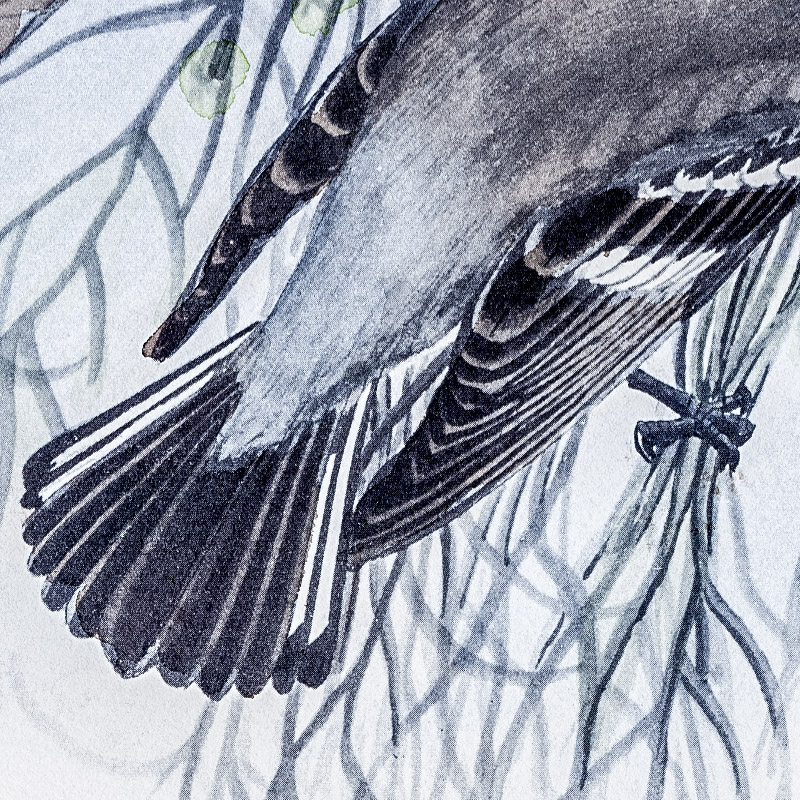
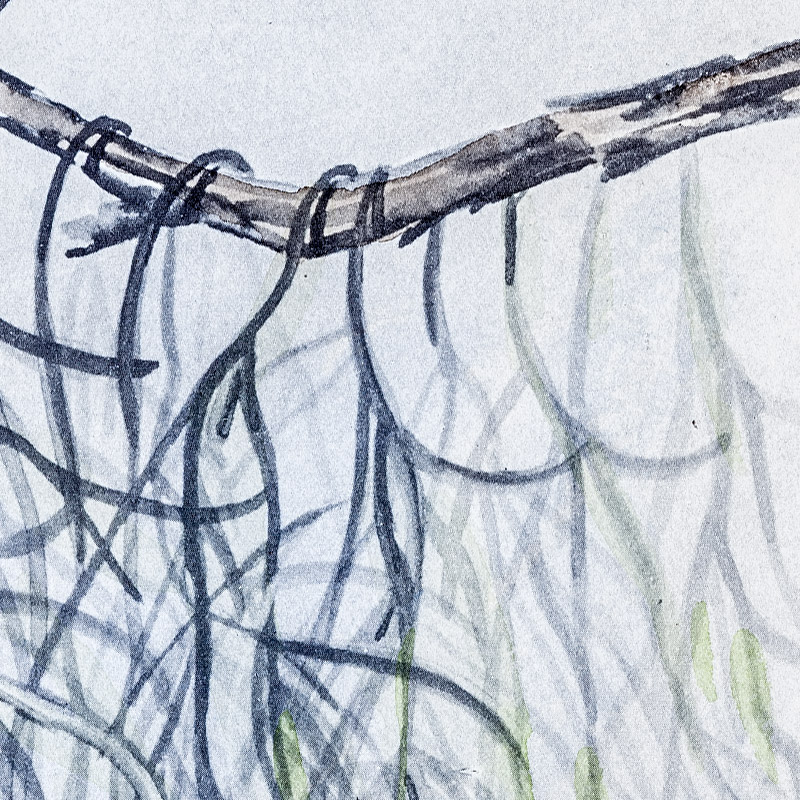
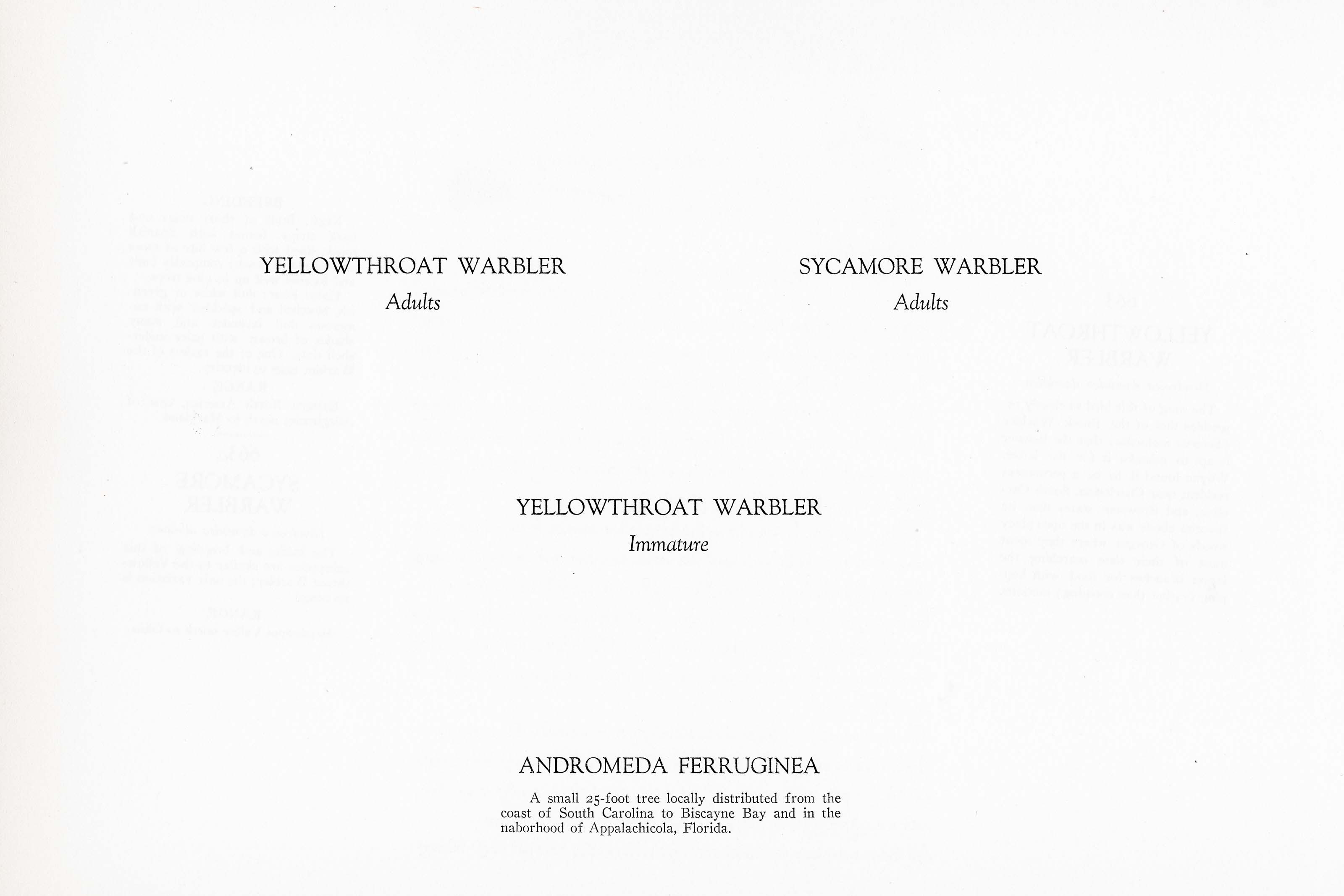
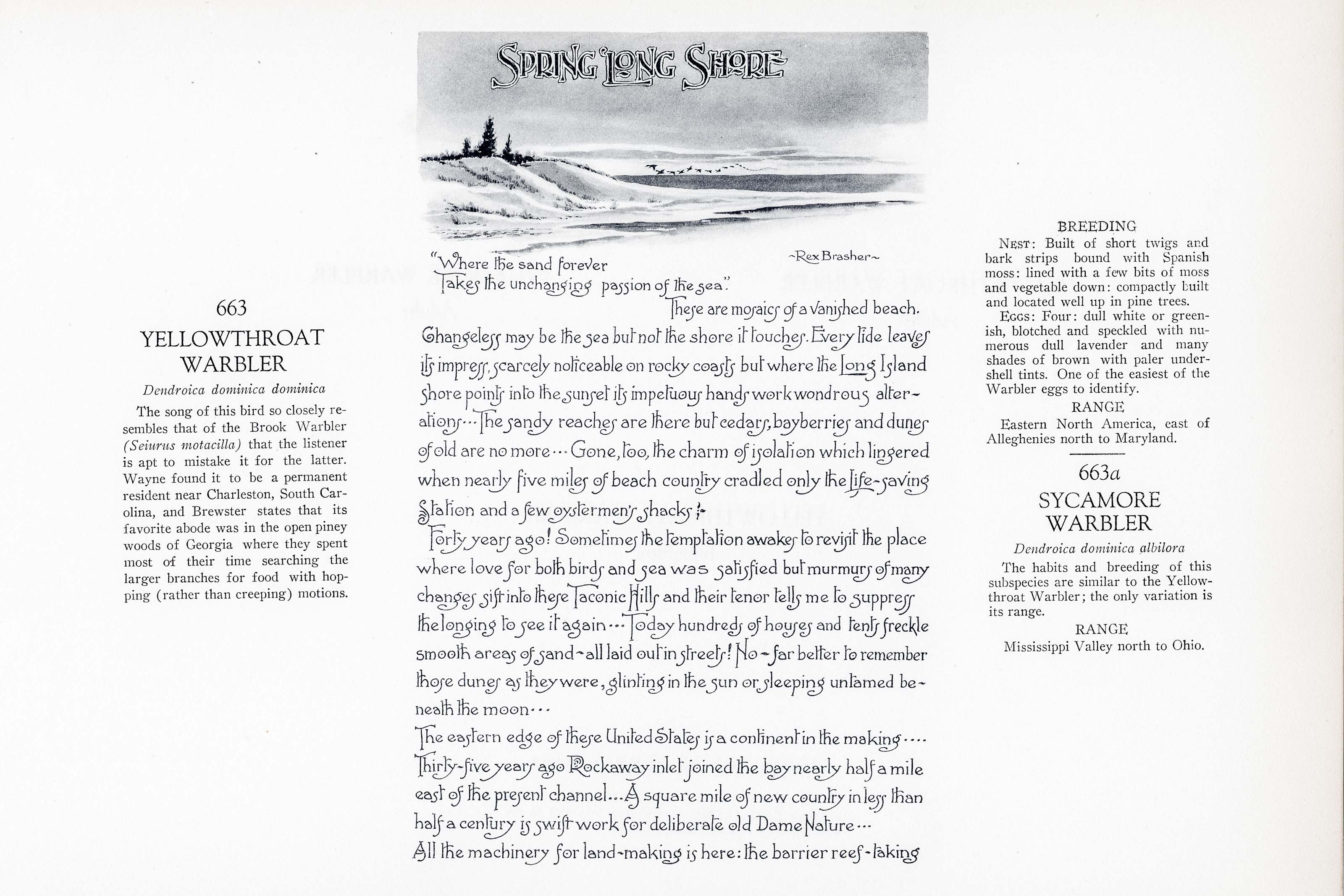

1912
1930
11
663-663a
A team of dedicated board members, volunteers, and student interns has published every page in Volume 9. This volume includes 360 images of paintings and lyrical descriptions of birds, now available online for everyone to enjoy anywhere in the world. This is a monumental task. Each volume requires approximately 400 hours to photograph, edit, transcribe, catalog, and publish online. We need your support to complete this work.
If you're tech-savvy, have a good eye, are meticulous with details, and love structured data, please consider volunteering by emailing us at hello@rexbrasher.org.
We encourage all bird lovers and supporters to consider a monetary donation to support our mission to make Rex's work available for everyone. You can provide a one-time or recurring donation online.
The song of this bird so closely resembles that of the Brook Warbler (Seiurus motacilla) that the listener is apt to mistake it for the latter. Wayne found it to be a permanent resident near Charleston, South Carolina, and Brewster states that its favorite abode was in the open piney woods of Georgia where they spent most of their time searching the larger branches for food with hopping (rather than creeping) motions.
NEST: Built of short twigs and bark strips bound with Spanish moss: lined with a few bits of moss and vegetable down: compactly built and located well up in pine trees.
EGGS: Four: dull white or greenish, blotched and speckled with numerous dull lavender and many shades of brown with paler undershell tints. One of the easiest of the Warbler eggs to identify.
Eastern North America, east of Alleghenies north to Maryland.
The habits and breeding of this subspecies are similar to the Yellowthroat Warbler; the only variation is its range.
Mississippi Valley north to Ohio.
A small 25-foot tree locally distributed from the coast of South Carolina to Biscayne Bay and in the naborhood of Apalachicola, Florida.